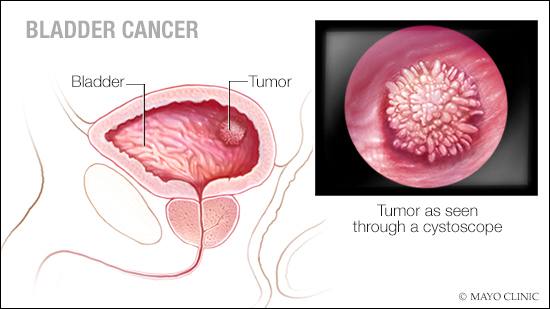-
Featured News
Mayo Clinic Q and A: Bladder removal to treat bladder cancer
 DEAR MAYO CLINIC: Is removing the bladder a reasonable treatment option for a 78-year-old with nonmuscle-invasive bladder cancer? My dad has tried other therapies without much success, but I’m worried removing the bladder will be too difficult for him to manage.
DEAR MAYO CLINIC: Is removing the bladder a reasonable treatment option for a 78-year-old with nonmuscle-invasive bladder cancer? My dad has tried other therapies without much success, but I’m worried removing the bladder will be too difficult for him to manage.
ANSWER: In the situation you describe, bladder removal is a reasonable approach. Bladder cancer can be a lethal disease if it’s not aggressively treated at this stage. Although the surgery is complex, when it’s performed by an experienced team at a center that offers thorough patient support, many people who undergo bladder removal recover and manage well following surgery.
There are two broad categories of bladder cancer: muscle-invasive and nonmuscle-invasive. Muscle-invasive is a more advanced form of the disease. Because of that, bladder removal usually is recommended right away in those cases. For people like your father, who have nonmuscle-invasive bladder cancer, cancer cells have not yet penetrated the deep structures of the bladder, such as the organ’s muscular wall, and bladder removal isn’t always necessary. Other treatment options, such as immunotherapy, may be appropriate instead.
If those therapies don’t successfully eliminate the cancer, however, or if the cancer is high-grade — which means it’s at risk to grow more aggressively than a low-grade tumor and may be more likely to spread to the muscular wall of the bladder and to other tissues and organs — then bladder removal may be recommended.
The type of surgery that’s typically used is called a “radical cystectomy.” It involves not only removing the entire bladder, but also taking out part of the ureters and surrounding lymph nodes. In men, radical cystectomy typically includes removal of the prostate and seminal vesicles, too.
As part of a radical cystectomy, the urinary tract must be reconstructed to allow urine to leave the body. That can be accomplished in several ways. The surgeon can create a path for urine to flow from the kidneys, through an opening in the abdomen, into a collection bag worn on the outside of the abdomen. Or a new bladder can be constructed surgically from a portion of the small intestine. Another option is to create a reservoir inside the abdominal wall to collect urine. The reservoir then must be emptied several times a day using a catheter.
Recovering from bladder removal surgery and adjusting to the changes it brings can be a challenge. However, most people are able to cope well when they receive care at a facility that has a team of experts experienced in handling the complex needs of these patients. Ultimately, most people who have the surgery can manage the changes in lifestyle and maintenance of the urine diversion themselves. But receiving comprehensive support and education after the surgery is key.
Various factors must be considered when deciding whether to proceed with bladder removal, including other existing medical conditions, health history, social support, mobility and access to health care. Age alone doesn’t dictate whether an individual can have this surgery. Most people who undergo bladder removal due to bladder cancer are in their 70s.
Before your father makes a decision, he should discuss the risks and benefits of bladder removal surgery with his surgeon. Together, they can review his individual situation and decide what’s best for his circumstances. — Dr. Erik Castle, Urology, Mayo Clinic, Phoenix







